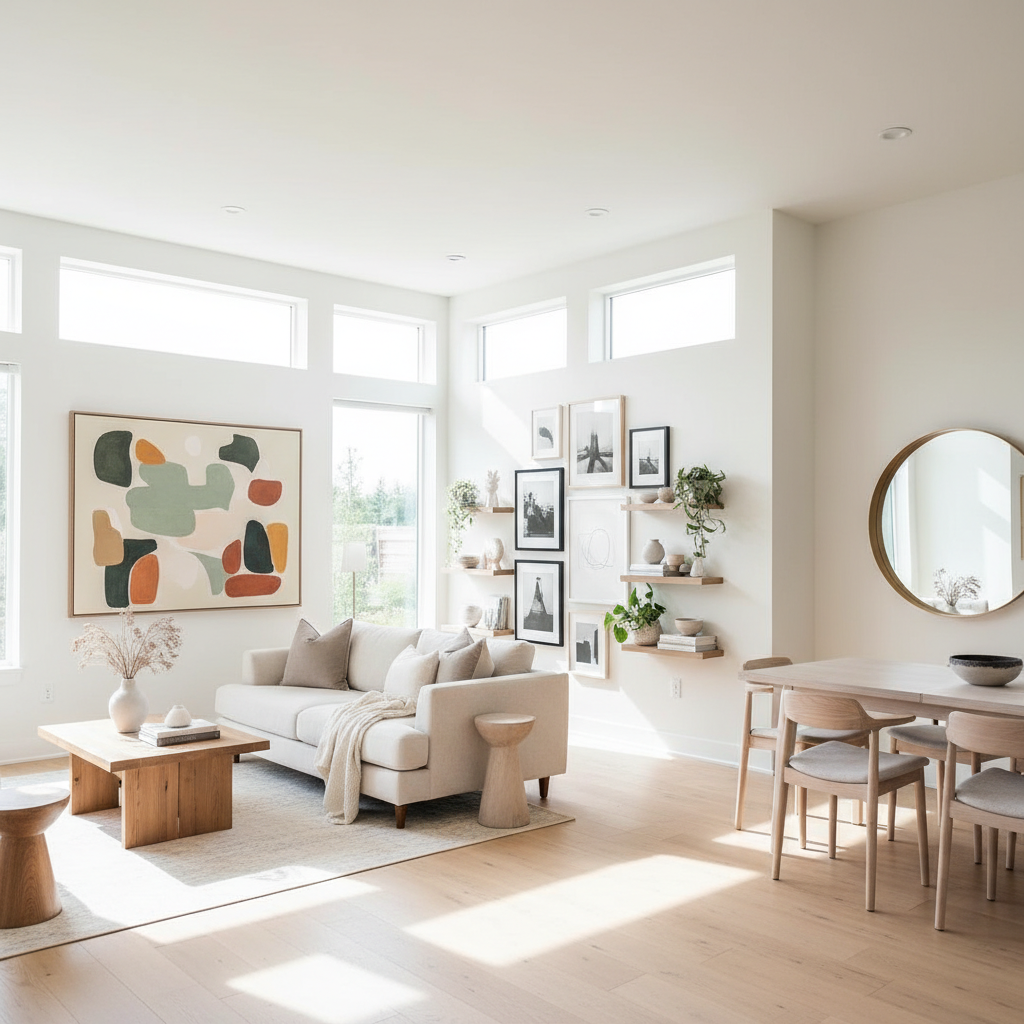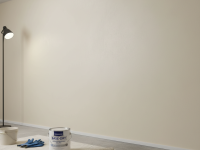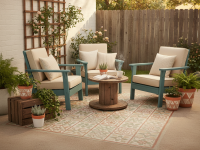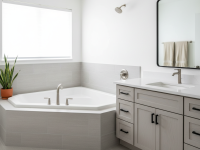Hey there, fellow home decorators! If you’re anything like me, you probably fell in love with the idea of an open concept living space – all that airiness, the flow, the light! It promises a sense of freedom and coection between different areas of your home. But let’s be honest, once you move in and those beautiful, expansive walls are staring back at you, the excitement can quickly turn into a bit of a decorating dilemma, right?
I remember standing in my own open concept apartment, feeling overwhelmed by the sheer scale of the walls. Where do you even begin? How do you make sense of such large, undefined canvases without making the space feel cluttered or, worse, completely disjointed? How do you create cozy zones within one big space without putting up physical barriers?
Well, I’ve wrestled with these very questions, experimented with countless ideas, and even helped friends and clients navigate their own open concept wall challenges. And I’m thrilled to share some of my favorite, most effective wall decor hacks that will not only elevate your open space but also make it feel cohesive, functional, and uniquely yours. Consider this your friendly guide to turning those daunting walls into stuing focal points!
Understanding the Open Concept Challenge
Before we dive into the fun part, let’s acknowledge why open concept walls can be tricky. Unlike traditional homes where each room has its own four walls, an open concept typically means fewer walls overall, and those that do exist often span multiple “zones” – perhaps coecting your living room to your dining area, or your kitchen to a family space. This means:
- Lack of Natural Boundaries: There are no built-in dividers to tell you where one area ends and another begins.
- Visual Flow is Key: Everything needs to make sense together, even if serving different functions.
- Scale Matters: Small decor items can get lost on vast walls, making the space feel sparse.
My initial mistake was trying to decorate each “zone” as if it were a separate room, which just made the entire space feel like a collection of mismatched ideas. What I quickly learned was that the key is to think about the *entire* open space while still using wall decor to subtly define areas. It’s all about creating visual cues without physical barriers.
Zoning with Wall Decor: Smart Strategies
One of the most powerful things wall decor can do in an open concept layout is to help define different functional zones. You want your living area to feel distinct from your dining space, even if they share the same wall.
Gallery Walls for Defined Zones
This is one of my go-to strategies. A well-plaed gallery wall can act like a visual anchor for a specific zone. For example, I used a large gallery wall above my sofa to clearly mark the ‘living room’ area. It drew the eye, gave that section a cozy, lived-in feel, and made it feel separate from the dining table just a few feet away.
- Tips for Success: Choose a cohesive theme (e.g., black and white photos, travel prints, abstract art with a shared color palette). Vary frame sizes and orientations, but keep the spacing consistent. Start from the center and work your way out. You can even use it to display personal mementos that tell a story specific to that zone.
Large-Scale Art: The Ultimate Statement
For walls that span a very large section or need a powerful focal point, a single, oversized piece of art is incredibly effective. Think a huge abstract painting, a striking photographic print, or a multi-panel artwork (diptych or triptych). This instantly commands attention and anchors a specific area without making the space feel busy.
- My Experience: In a friend’s open concept home, we used a massive canvas art piece with calming blue and green tones on the wall behind her dining table. It instantly elevated the dining area, giving it a sophisticated edge and making it feel like a destination within the larger space. Plus, it visually linked to other decor elements through its color palette.
Mirrors for Light and Illusion
Mirrors are a decorator’s secret weapon, especially in open concept spaces. They not only reflect light, making a space feel brighter and more expansive, but they can also add a decorative element. A large, ornate mirror can be a stuing piece of art in itself, while a minimalist mirror can complement a sleek, modern aesthetic.
- Placement Perk: Position a large mirror strategically on a wall opposite a window to maximize natural light. In a slightly smaller open concept area I once designed, a huge, round mirror placed at the end of a long wall created an incredible illusion of depth and light.
Adding Texture and Dimension
Flat walls, even with beautiful art, can sometimes feel a bit one-dimensional. Adding texture and varying materials is crucial for warmth and visual interest.
Textile Art & Tapestries
Don’t underestimate the power of textiles! Woven wall hangings, macrame art, or even framed textiles can introduce softness, warmth, and a tactile element that paint or prints can’t. They’re also great for absorbing sound, which can be a bonus in echo-prone open spaces.
- Real-World Example: I helped a client who had a very sleek, modern open space that felt a little cold. We introduced a large, handmade woven tapestry on one of the main walls, and it instantly softened the room, added a bohemian touch, and made the space feel so much more inviting.
Floating Shelves & Built-ins
These are fantastic for combining decor with functionality. Floating shelves allow you to display personal treasures, books, plants, and smaller art pieces without taking up floor space. When arranged thoughtfully, they can also act as a visual boundary or a way to break up a large wall.
- My Advice: Don’t just line them up straight. Vary the length and height of shelves if you have the space. Group objects in odd numbers (threes or fives) and mix textures and heights. In my own home, a set of floating shelves near my kitchen island became a lovely spot for cookbooks, small decorative bowls, and hanging plants, blending utility with a splash of green.
Wall Paneling & Architectural Details
For those looking for a more permanent way to add character, consider wall paneling like wainscoting, shiplap, or decorative molding. These details add architectural interest and can make a simple wall feel incredibly luxurious or charming, without physically dividing the space.
- A Design Secret: Even a subtle strip of molding can delineate a zone. I once saw an open concept living room where a simple chair rail was installed on one wall, then painted a slightly darker shade below it. It created a distinct “living room” feel on that wall without making it feel enclosed.
Color and Cohesion: Making it Flow
Color plays a huge role in open concept spaces. You want different areas to feel unique, but still part of a larger, harmonious whole.
Accent Walls (Done Right)
Yes, you can absolutely have an accent wall in an open concept, but there’s a trick to it. The key is to choose a wall that naturally ends or defines a specific zone, rather than one that cuts awkwardly across a multi-functional space. For instance, the wall behind your TV, or the main wall in your dining area, can be a great candidate.
- My Learning Curve: I once tried an accent wall that ran halfway into another zone, and it just looked like a mistake. The best accent walls in open concepts are those that clearly belong to one segment, helping to ‘ground’ that zone. Use a color that complements your overall palette.
Harmonizing Color Palettes
To ensure cohesion, think about a core color palette for your entire open space. This doesn’t mean everything has to be the same color, but rather that your accent colors should be repeated subtly across different zones. If you have a blue cushion in your living room, perhaps a blue vase on your dining table or a subtle blue in an artwork in your entry.
- Personal Tip: I like to pick 2-3 main colors and 1-2 accent colors, and then ensure elements of those colors appear in each zone’s wall decor, textiles, and accessories. This creates a visual thread that ties everything together beautifully.
Personal Touches & Practical Tips
Your home should tell your story. Wall decor is the perfect canvas for that!
- Embrace Personal Collections: Don’t hide your travel souvenirs or quirky finds. Display them! Curate collections on shelves or as part of a gallery wall.
- Think Vertical: Open concept spaces often have higher ceilings or just a lot of vertical space. Don’t be afraid to use tall pieces of art or arrange items vertically to draw the eye upwards and make the space feel grander.
- Lighting as Decor: Wall sconces or picture lights aren’t just for illumination; they can be stuing decorative elements themselves. They add ambiance and highlight your chosen wall art.
- Less is More (Sometimes): While it’s tempting to fill every empty spot, sometimes a few well-chosen, impactful pieces have more presence than a wall crammed with small items. Give your decor room to breathe.
- Don’t Be Afraid to Experiment: It’s your home! Try things out. Use painter’s tape to mock up gallery wall layouts before hammering nails. Move things around until they feel just right.
Conclusion
Decorating the walls of an open concept living space can seem like a monumental task, but with a little plaing and these practical strategies, you can transform those blank canvases into breathtaking features. Remember to think about defining zones, adding texture, maintaining color cohesion, and infusing your unique personality into every choice.
Your open concept walls aren’t a challenge; they’re an incredible opportunity to create a home that flows beautifully, feels incredibly inviting, and reflects your style. So go ahead, get creative, and make those walls work for you!




